“To err is human… but to correct is teacherly”. This is the twist that we, as English language teachers, add to the old saying (Alexander Pope will just have to forgive us for taking artistic licence with his work).
Now we all know that our students make mistakes. No matter how clear we make our explanations, no matter how many examples we offer, and no matter how much practice we have them do, it still happens. Errors in the classroom are as natural and as unavoidable as death and taxes. But unlike these two, hearing mistakes in the classroom may actually be a good sign.
We tend to view mistakes negatively, but these may just be an indicator that learning is taking place, that our students are trying to make room for a new piece of information in their personal repository of language. This can sometimes disrupt pre-existing connections and links, meaning it may take some time until new items are fully integrated in this complex web.
Our jobs, as teachers, is to help our learners expand this web, and part of this involves dealing with the mistakes we hear or read in the classroom. But how can we ensure error correction can be efficient? How can we use it so that it helps, rather than hinders, the learning process?
Errors and Mistakes
First, let’s make a distinction between errors and slips. An error is a mistake made because of insufficient knowledge of the rules governing the target language. On the other hand, slips are… just that, minor mistakes made due to inattentiveness, tiredness etc. In this article we will mostly address correcting errors.
What to do
When we pick up on an error being made by one of our students, we need to decide how we want to act. To this end, Scrivener indicates a set of questions that can point us in the right direction:
- What kind of error was it?
- Should we deal with it?
- When should it be corrected?
- Who does the correcting?
- How will it be done?
Let’s take them one by one:
- Kind of error – these can be grammatical, lexical, related to pronunciation, word stress, sentence stress, intonation etc. The reason we are interested in the type of mistake that has been made is because this tells us whether we should intervene or not. Which leads us to…
- Do we correct? As we’ve just mentioned, we need to know if we step in or not. A simple way of deciding is by asking ourselves whether the mistake was related to something above our students’ level. If your young learners tried to use the third conditional and it didn’t come out quite right, but it’s not something you intend on teaching them yet (or is quite simply above their understanding for the time being), then you may choose not to do anything about it. On the other hand, did your learner forget to use the auxiliary “do” when asking a question in the present simple, despite it being a revision activity? Then maybe this it is a good idea to do some correcting. The point is, you might want to deal with an error if it’s related to the target language you’ve just taught or have taught at some point during the school year. However, there are other things to consider here as well.What is the aim of the activity? Imagine you’re trying to improve your learners’ fluency. Correcting them as they’re trying to express an idea might defeat the purpose of the activity and might do more damage than help. Your student might lose confidence in themselves and feel frustrated due to not being allowed to finish their thought.Conversely, if the activity focuses on accuracy, then you’re more likely to tackle mistakes. But does that mean we just interrupt our students in the middle of their answer? And do we never correct errors made during a fluency-based activity?
- This begs the question, when do we correct?
Sometimes, the answer is never (just like in the example with the third conditional mentioned above). Other times, we have several options to keep in mind.- Correcting immediately – e.g. when practicing the present perfect simple and a student uses the wrong form of an irregular verb, you can do on the spot correction.
- Correcting later – i.e. letting the student finish their sentence / idea first
- At the end of the activity – also known as delayed error correction. This can work for fluency-based activities. This way, the students are not interrupted and mistakes can still be discussed. This method is further explained below.
- But who should do the correcting?
As teachers, our first instinct is to correct the mistakes ourselves. After all, that’s why we’re there, isn’t it? To impart our knowledge to our students. Well, not quite. We’ll see things are not so straightforward.Mistakes are not the end of the world. Everyone loves a second chance. Just get the learner who made an error correct themselves. There’s nothing better than showing your students you have confidence in their abilities and giving them time to think and self-correct. Just because they got it wrong at first does not necessarily mean they do not know the rules. Maybe they’re still trying to wrap their heads around them, or they haven’t yet integrated them into their web.
If this works, then hurrah! But what about when it doesn’t? Now, just because one of the learners made a mistake, it doesn’t mean the others would, too. So why not let them lend a helping hand to their colleague? This is beneficial from two points of view. Firstly, by getting the other students to correct, you’re helping them practice their English and confirm their knowledge of the rules. Secondly, it minimises your input and lets the learners take centre-stage. Not everything has to come from you. You’re just the director, guiding things from behind the scene. Let your actors try their hand at perfecting their craft. And, most importantly, don’t let them tell you how to correct the mistake. Get them to tell the learner who originally got it wrong, so they can say it again correctly. A little note here: make sure your students can correct each other in a sensitive way. If you think they might be a bit too blunt about it (e.g. “I can’t believe you got that wrong!”), then you may want to do the correcting yourself.
- How can we correct?
This is again a perfect moment to remember that less is more i.e. the less you help, the better. Ideally, you would avoid just correcting someone as soon as a mistake has been made.The first step would be to simply indicate a mistake has been made. There is a number of ways to do this. You might just raise an eyebrow. You might give the class a confused look. You might repeat the sentence with a rising intonation, like a question. You might repeat the sentence and stress the incorrect word / part. You can just repeat the sentence, stopping right before the mistake. You could just repeat the incorrect word with a rising intonation, as if asking “Are you sure this is the word you want?”.
If self-correction still hasn’t taken place, then you can try to be a bit more explicit. Indicate the type of mistake made e.g. “Word order?”, “Tense?” “There’s an extra / missing word”. You can even narrow this down e.g. “Do we need the present simple or present continuous?”, or go further “Is it ‘we are going’ or ‘we go’?”, but only if you see your students are lost.
I may sometimes board the sentence and underline the error there, as I feel making it visual helps keep everyone on the same page. You can even use gestures. To indicate the need for the past, I point over my shoulder. If two words need to switch places within a sentence, I hold out two fingers as if I were ready to plug them in a wall socket and turn them clockwise repeatedly.
You can also use the finger method: get your learner to repeat the sentence, and as they say a word, you show them your palm and indicate one of your fingers for each word they say. After they finish, indicate the finger where the mistake is, wiggle it, bite down on it (I’ve seen Scrivener do it, so why not?), bend it, do anything to indicate that’s where the problem is.
These methods can work when doing on-the-spot correction, or after the student has finished speaking. When it comes to activities meant to improve fluency, i.e. when we shouldn’t interfere during the task itself, then we can go for delayed error correction. It’s quite simple. As the students are working, you monitor them and collect instances of language (either good or… not so good). Try to aim for recurring mistakes, or errors related to the target language. Board these (but while the students are still doing the task), then let them read the sentences and figure out if they are correct or not. Let them confirm their answers with a partner, then with the whole class. This way, you do not interrupt the students while they are working but do get to correct some recurring errors. Also, no one is put on the spot, as the class has no idea who said the things that are now on the board.
This is by no means meant to be an exhaustive list of all the ways of doing error correction. But it’s a good place to start, and it’s well worth trying out some of these techniques.
Sources:
- Harmer, J. (2007) – The Practice of English Language Teaching, 4th edn. Pearson Longman
- Scrivener, J. (2011) – Learning Teaching, 3rd edn, MacMillan


